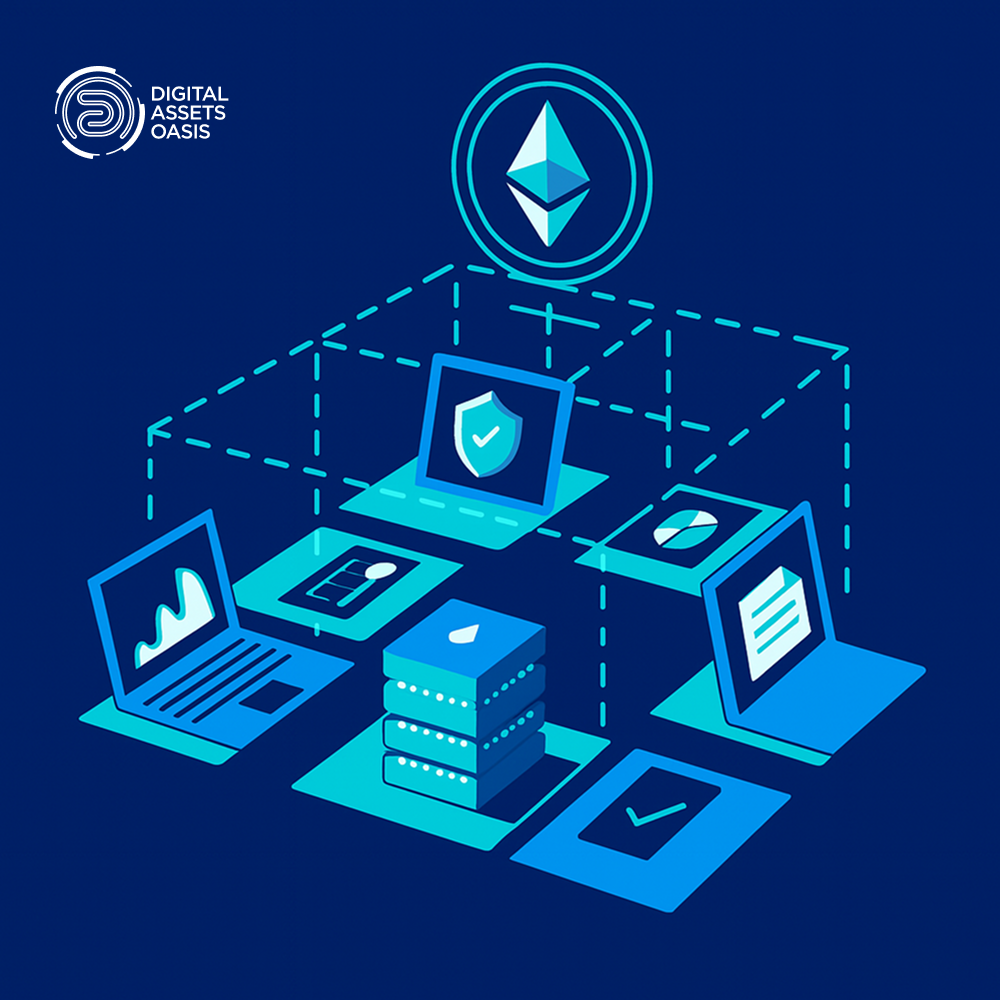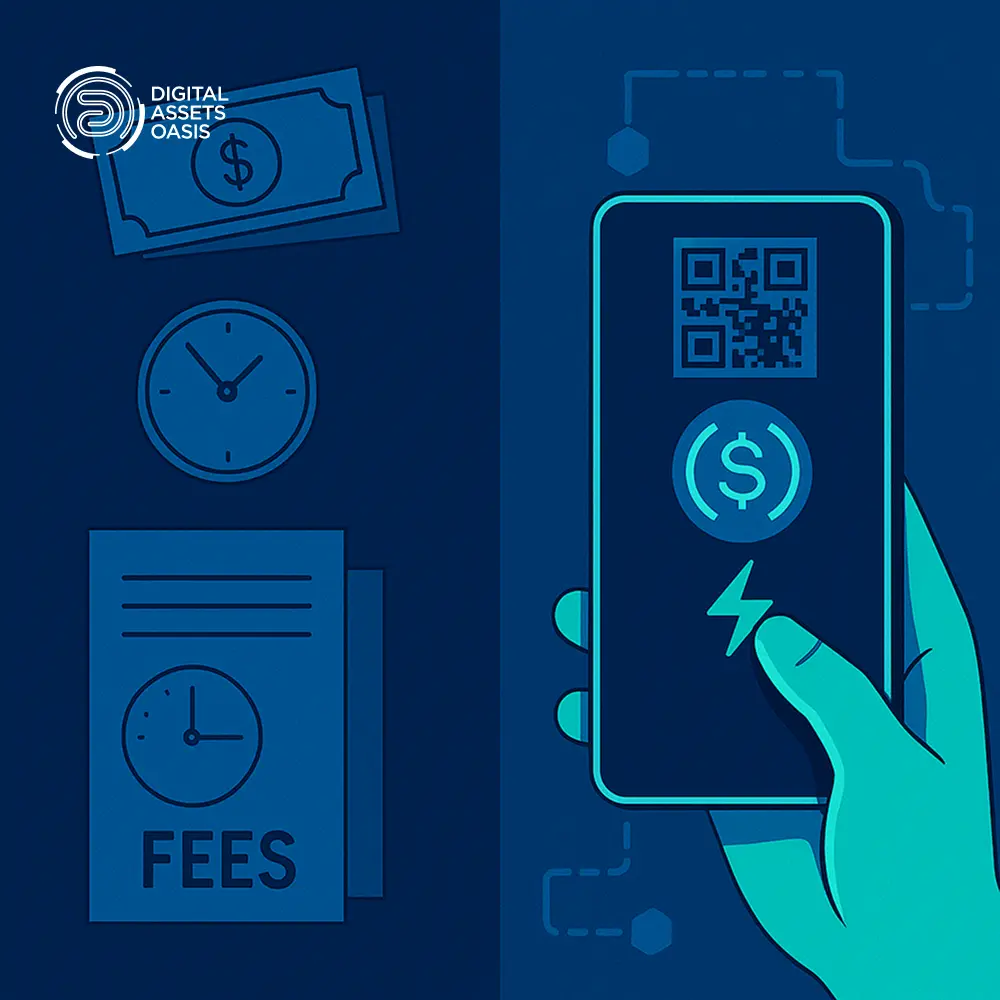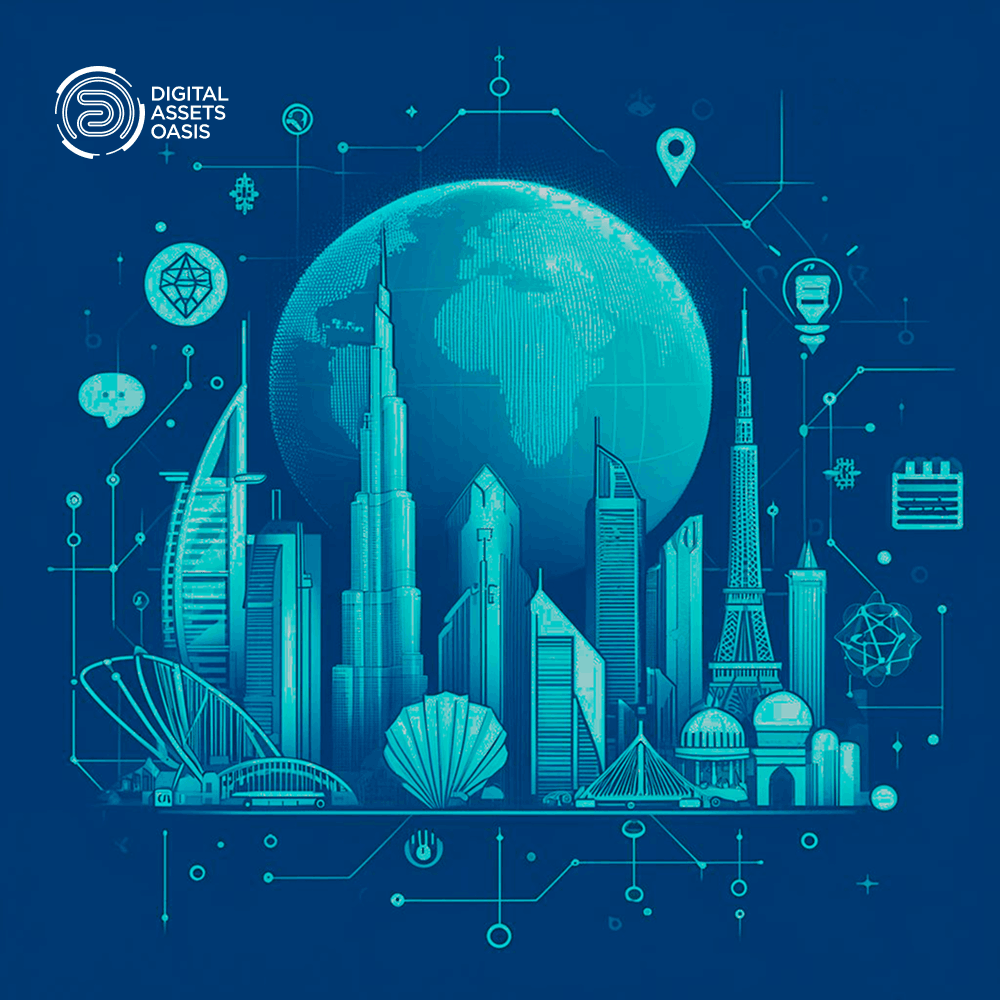web3 and Digital Assets: beyond hype cycles and token prices
The past two years in crypto have been nothing short of an emotional rollercoaster. From euphoric highs to winter-induced despair, those in the industry have had front-row seats to the trials and triumphs of a technology rebuilding the rails of our global financial, cultural, and technological systems. These cycles—painful as they are—remain the industry’s lifeblood. And for those equipped with conviction and a long-term view, they mark not the end but a chance at reinvention.
Web3 and digital assets are no longer an experiment, regardless of what happens to token prices in the short-term. The recent surge in institutional adoption by regulated capital markets is a strong signal.
The Middle East and APAC represent two fascinating, underexplored frontiers for crypto adoption. Countries like Japan, South Korea, Taiwan, and the UAE are pulling far ahead of Western markets in many regards: regulatory clarity, retail enthusiasm, and institutional acceptance.
Cycles Define Crypto, and That’s a Good Thing
The 2021 bull run capped off Bitcoin's explosion into legitimacy, Ethereum’s rise as a programmable money layer, and DeFi’s growth into a parallel financial ecosystem. Meanwhile, NFTs brought mainstream culture to digital assets, onboarding celebrities, artists, and brands.
But the exuberance of 2021 quickly transitioned to the harsh realities of 2022. With the collapse of centralized entities—Terra/LUNA, FTX, Celsius—it seemed the industry's reputation had forever soured. Liquidity dried up, valuations cratered, and even web3 natives questioned the sector’s future. While painful, these winter cycles force the industry to do what traditional financial markets often avoid: purge bloat, hold bad actors accountable, and rebuild foundational layers.
Fast-forward to 2024, and we saw once again that resilience is in web3’s DNA. Institutional capital is returning to DeFi protocols. Major brands—from Starbucks to Spotify—are building NFT-based loyalty programs. Unlike 2021's speculative frenzy, this cycle was built on institutional rails. We're seeing the infrastructure develop in real-time: robust custody solutions, institutional-grade trading venues, sophisticated risk management tools, and compliant on/off ramps. This "picks and shovels" layer may appear appealing to some, but it is essential for the world's capital to flow seamlessly into digital assets. And developers, as always, remain undeterred. Crypto promises a frontier advantage to those willing to think long-term. These high-stakes cycles prune opportunists and reward builders.
Emerging Themes: What’s Next in web3?
There are several critical trends define crypto's evolution. These aren’t just fleeting “metas” but durable shifts that will shape the crypto economy's next decade.
1. Infrastructure for a Multi-chain Future
Despite the maximalist rhetoric surfacing on Crypto Twitter, the industry has leaned into a pragmatic multi-chain future. Ethereum remains dominant as the settlement layer of DeFi and NFTs, but alternatives like Solana, Avalanche, and modular chains such as Celestia prove that scalability doesn’t require sacrificing decentralization.
The rise of blockchain interoperability protocols (e.g., LayerZero, Axelar, and Wormhole) underscores the need for seamless communication between networks. Users may not care about the tech stack; they care about a smooth experience. This focus is evident in the rapidly maturing wallet infrastructure, like smart contract wallets and “account abstraction,” which enable intuitively designed cross-chain UX.
In APAC, where retail adoption is driving Web3 experiments, this multi-chain adaptability is not just relevant—it’s essential. South Korean exchanges like Upbit already list diverse altcoins, while Japanese regulators emphasize consumer-friendly licensing frameworks for new layer 1 projects.
2. DeFi’s Institutional Moment
The DeFi narrative is undergoing its Cambrian explosion. Early excitement about yield farming and protocol tokens has given way to a more refined vision: a decentralized financial stack that serves institutions and retail alike. 2024 has seen tokenized assets—real-world ones like bonds and private equity—transition from proof of concept to serious liquidity engines, led by platforms like Maple Finance and Centrifuge.
Asia leads the charge here, particularly in Singapore and Hong Kong, where regulatory sandboxes for tokenized finance attract local and foreign institutions. Goldman Sachs' trade of tokenized securities through HKMA’s pilot was not an isolated event but a harbinger of institutional DeFi.
3. DAOs and Coordinated Capital
DAOs (decentralized autonomous organizations) have evolved from scrappy experiments to serious governance vehicles, empowering communities to allocate capital and influence policy. One example is Korea's Mirae Asset-backed DAO structuring investments into early-stage crypto projects, blending tradition with innovation.
Tools for on-chain voting and treasury management are maturing, propelling DAOs past their limited 2020 models. This new infrastructure unlocks collaborative capital networks, especially in places like Taiwan, where tech-forward communities find natural synergy in decentralized models.
4. Tokenization of Real-world Assets (RWAs)
Financial markets are being reimagined through tokenization. Credit markets led the way with $5B+ in on-chain private credit, but this is expanding to real estate, carbon credits, and financial products. The most exciting developments aren't happening on Wall Street but in places like Singapore, Hong Kong, and Dubai, where regulatory frameworks actively encourage experimentation. As of 2025, the sector has seen significant growth, with the total value of tokenized RWAs reaching approximately $15.2 billion, marking an 85% year-over-year increase.
Key Developments in RWA Tokenization:
- Institutional Adoption: Major financial institutions are leading the way. BlackRock's tokenized fund, BUIDL, has surpassed Franklin Templeton's OnChain U.S. Government Money Fund in market capitalization, indicating growing institutional interest.
- Diverse Asset Classes: Tokenization now encompasses a wide range of assets, including real estate, private credit, and government securities.
- Geographical Expansion: The Middle East is emerging as a hub for RWA tokenization. Dubai's DAMAC Group has partnered with blockchain platform MANTRA to tokenize $1 billion worth of real estate assets, reflecting the region's commitment to integrating blockchain into its financial infrastructure.
5. AI + Crypto Convergence
The intersection of AI and crypto infrastructure is creating powerful new models: From decentralized compute networks to machine learning models built and trained on-chain, we're witnessing the birth of AI systems with transparency and verifiability built in. The combination of these technologies will reshape information markets, content creation, and data ownership. Furthermore, agentic AI can supercharge Decentralized Public Infrastructure (DePINs) by making governance, resource allocation, and smart contract execution more robust and secure.
Why APAC & Middle East are Crypto’s New Frontiers
The Middle East: Thriving web3 Hub
The Middle East is emerging as the world’s most progressive cryptocurrency jurisdiction, providing thoughtful regulation without stifling innovation. The United Arab Emirates (UAE) is leading this charge. Initiatives like Dubai’s VARA (Virtual Assets Regulatory Authority) deliver a regulatory framework compatible with international standards. Abu Dhabi’s ADGM offers institutional-grade custody for digital assets. We at RAK Digital Assets Oasis are the world’s first free-zone or special economic zone dedicated to web3 and digital assets. This clarity encourages startups to set up base while institutional capital deepens exposure across asset classes.
Furthermore, the Gulf region’s economic maturity—oil wealth diversifying into sovereign investment funds—makes it a natural incubator for Web3 adoption. With energy being the core contributor to Gulf economies, blockchain can optimize supply chains and carbon markets, ensuring alignment with global environmental, social, and governance (ESG) trends.
APAC: A Retail Adoption Story
Countries like Japan, South Korea, Taiwan, and even Vietnam are showing unparalleled retail enthusiasm for Web3. Japan’s long-term regulatory clarity, including legalized stablecoins under its Financial Services Agency, allows for the broader adoption of dApps among younger, digitally native populations.
South Korea, meanwhile, has embraced gaming as crypto’s killer app. Giants like Kakao and Nexon seamlessly incorporate play-to-earn (P2E) mechanics into their offerings, onboarding millions to Web3 ecosystems. Likewise, Taiwan’s grassroots adoption of decentralized wallets and hardware security reflects a deep level of cultural fit between local tech communities and blockchain technologies.
Southeast Asia, particularly in high-growth nations like the Philippines and Vietnam, exemplifies crypto’s relevance to the unbanked. Play-to-earn games and remittance applications demonstrate blockchain’s ability to marry entertainment with financial empowerment.
Why Thinking Long-Term is Needed
The case for web3 and digital assets has never been clearer. We are witnessing the rapid maturity of technology, growing regulatory legitimacy, and adoption curves rivaling the Internet's early years. With their progressive stances, diverse economies, and technologically savvy populations, the Middle East and APAC represent green fields where crypto will grow into a core societal fabric.
Like the cycles behind us, the next phase will be turbulent. But each downturn makes the industry stronger, more resilient, and more antifragile. Doubting digital assets now is to miss its foundational importance not just as an alternative finance layer but also as an engine of participation, equality, and innovation across borders.
Let’s get to work and start building the next killer app in web3.




